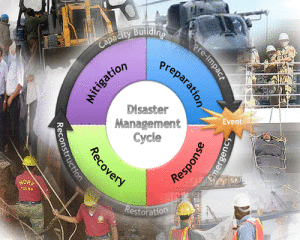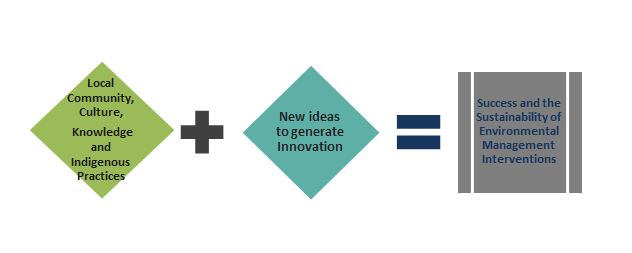DEPARTMENT OF MANAGEMENT, FACULTY OF SOCIAL SCIENCES
DAYALBAGH EDUCATIONAL INSTITUTE (DEEMED UNIVERSITY)
(N.A.A.C. ‘A’ GRADE, ISO 9001: 2008 CERTIFIED), DAYALBAGH, AGRA- 282005
This knowledge is the sum of facts that are known or learned from experience or acquired through observation and study and handed down from generation to generation.
Traditional Knowledge (TK), variously referred to as ‘traditional knowledge‘, ‘traditional ecological knowledge‘, ‘local knowledge‘, ‘folk knowledge’ is knowledge developed by local and indigenous communities over time in response to the needs of their specific local environment. According to the United Nations Environmental Program (UNEP), traditional communities rely on indigenous knowledge to conserve the environment and deal with disasters. These communities, particularly those in hazard-prone areas, have generated a vast body of indigenous knowledge on disaster prevention and mitigation.
Disaster Management and planning is a key part of government work. Asia tops the list of casualties due to natural disaster. Among various natural hazards, earthquakes, landslides, floods and cyclones are the major disaster adversely affecting very large area and population in the India sub-continent. These natural disasters are of:
- Geographical origin such as earthquakes, volcanic eruptions, land slides.
- Climatic origin such as drought, flood, cyclone, locust, forest fire.

The disaster mitigation works mainly address the following:
- Minimize the potential risks by developing disaster early warning strategies.
- Prepare and implement developmental plans to provide resilience to such disaster.
- Mobilise resources including communication and tele-medicinal services.
- To help in rehabilitation and Post-disaster reduction.
Sustainable development has been variously defined and explained. For example, the International Union for the Conservation of Nature and Natural Resources (IUCN) explains that, “for development to be sustainable it must take account of social and ecological factors, as well as economic ones; of the living and nonliving resource-base; and of the long term as well as the short term advantages and disadvantages of alternative actions”. The definition most often quoted, however, comes from the World Commission on Environment and Development (WCED), published in 1987, which refers to sustainable development as “development that meets the needs of the present without compromising the ability of future generations to meet their own needs.”
Eco community villages can be defined as being human-scale, full-featured settlements in which human activities are harmlessly integrated into the natural world. It is supportive of healthy human development, and can be successfully continued into the infinite future. Demographically, these can be urban or rural communities of people, who strive to integrate a supportive social environment with a low-impact way of life.
Environmental conservation and disaster management are critical to the livelihoods of indigenous people who often live in hazard-prone areas. They have built up, through thousands of years of experience and intimate contact with the environment, a vast body of knowledge on hazards and the environment events. This knowledge is a precious resource that continues to contribute to environmental conservation and disaster management in these regions. With the disruption of traditional lifestyles and changing settlement patterns, it is a challenge to maintain the continuity of traditional knowledge through transmission from generation to generation. In this way, Indigenous knowledge should be considered as a complement to scientific knowledge in the development of community based disaster mitigation and risk management plans and programs.
- To analyze the macro socio – economic-environmental interface in the selected Eco-communities of India
- To examine the facets of indigenous knowledge capacity and its dissemination in the selected Eco community villages of India
- To explore the prospect of indigenous knowledge capacity building under a holistic ‘Stakeholder’ framework
- To evaluate the nature and scale of cross-community information sharing and capacity building for disaster mitigation and sustainable development in the selected regions
- To develop causal system model based on the linkages among critical decision variables related to indigenous capacity building and value enrichment
- To devise policy guidelines and action plans of large scale acquisition and dissemination of indigenous knowledge capacity of Eco communities across India
In this kind of holistic study, in addition to extensive review of the relevant literature available on indigenous knowledge, a multiple set of data collection methods, need to be used in the selected eco village community based on interactive discussions, open interviews, focus group discussions, meetings, cultural mapping and interactive sessions with rural folk. In particular, meetings are deemed important for informing and building community trust with the researchers and laying the groundwork for further research.
It is thus a promotion of participatory research methodology where research is with communities, and not just ‘for’ them. This would ensure accountability of research process and outcomes to a wider community.
According to the United Nations Environmental Program (UNEP), traditional communities greatly rely on and make use of indigenous knowledge to conserve the environment and deal with disasters. These communities, particularly those in hazard-prone areas, have generated a vast body of indigenous knowledge on disaster prevention and mitigation.
Our Vision under this project is –
To Bring out and make Digitally visible the vast Repository of Tacit Knowledge related to Eco-Communities of India and Facilitate its wider Dissemination and Knowledge-Sharing for the Promotion of Sustainable and Holistic Socio-Economic-Environmental Living

- In this project, special attention would be given to the e-content development and preservation of indigenous knowledge systems (i.e. indigenous knowledge documentation and database) and its causal relationship to disaster risk reduction and environmental sustainability.
- A conscious effort would also be made to ensure participation of local inhabitants for long-term acceptance and success of this project.
- It can be noted that when documented, the information would be available in a convenient form to a wide range of audiences including government decision makers, environmental and disaster management practitioners, medical practitioners, academics, researchers, journalists, indigenous and local communities, as well as international development agencies including UNEP and other stakeholders.
- The study intends to strengthen capacity building in indigenous knowledge and help to integrate the knowledge with other knowledge systems and development processes, particularly for environmental conservation and natural disaster management.
- Towards this goal, it would facilitate community engagement and link teaching; research and practice to better reflect the knowledge creation and knowledge mobilization across the eco communities and academic/research institutions. This would offer a vital opportunity to address the issues of community health, community cultures, community practices in sustainable development/natural resources and other related aspects of community knowledge production, application and dissemination.
